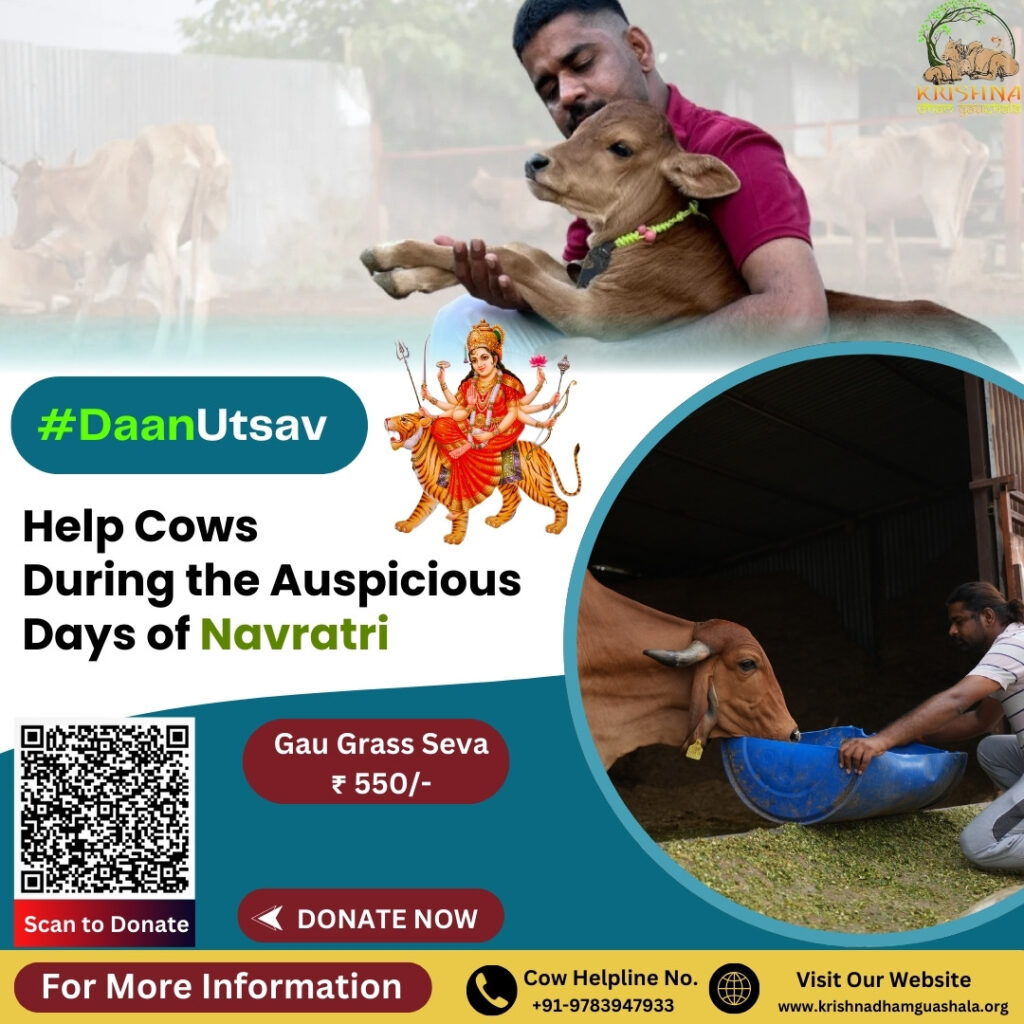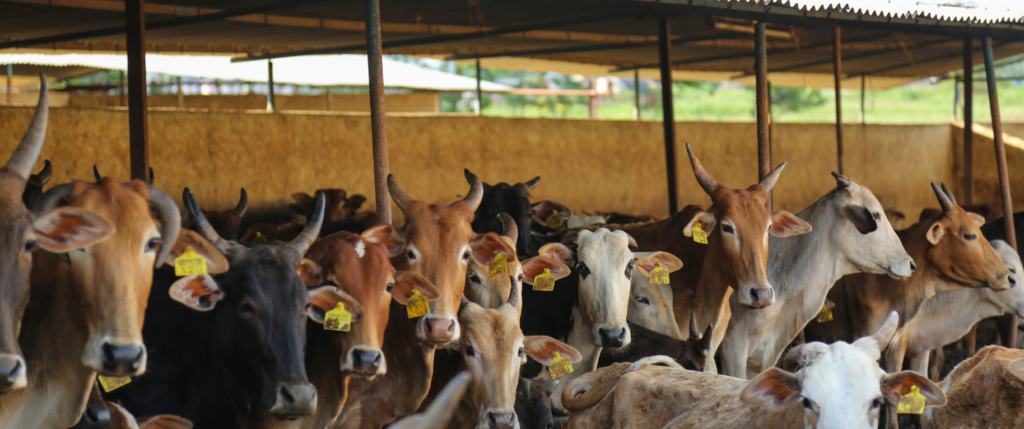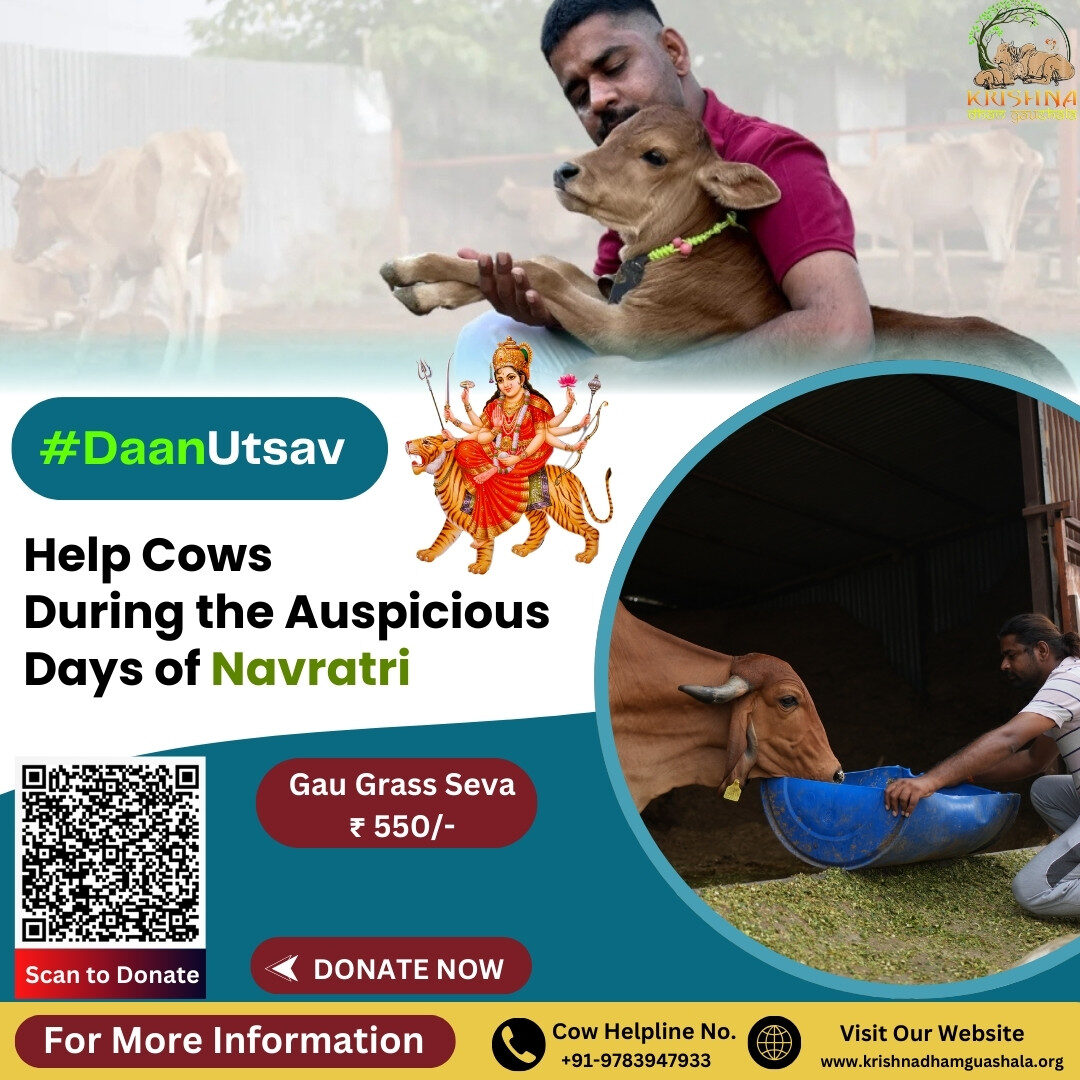How does Cow hold a Special Place with Goddess Durga and Navratri ?

Navratri Donation – Help Cows During this Auspicious Days of Navratri
The month of Navratri is a time of devotion and celebration for Hindus around the world. For nine days, devotees worship Goddess Durga, also known as Maa Shakti, in her various forms. Temples are filled with prayers and chants, while homes and communities come alive with joyous festivities. During this auspicious festival, many people fast, perform special rituals, and offer prayers to seek the blessings of the goddess. But amidst these celebrations, there is a sacred connection between Navratri, Goddess Durga, and the beloved cow, which holds a special place in Sanatan Dharma.
In Hindu culture, the cow is not just an animal—it is revered as a motherly figure. Known as “Gau Mata,” or Mother Cow, she symbolizes nurturing, love, and selflessness. Just as a mother provides nourishment to her children, the cow offers milk and countless other resources that sustain human life. This maternal association aligns with the worship of Goddess Durga, who is seen as the universal mother, protecting and caring for her devotees.
Goddess Durga, in her many forms, represents strength, protection, and the destruction of evil. In the same way, the cow is considered a divine protector. The scriptures mention that all 33 crore (330 million) deities of Hinduism reside within the cow, making her a living embodiment of divine energy. Thus, serving and respecting the cow during Navratri is believed to please not only Goddess Durga but also all the other gods and goddesses.
1. Blessings of the Cow During Navratri
During Navratri, serving the cow is seen as an act of great merit. It is believed that feeding and caring for cows during this period brings immense spiritual benefits and fulfills all wishes. Many people offer fresh grass, food, and even donate for the well-being of cows, believing that such acts will invoke divine blessings.
The presence of a cow is said to purify the surroundings and remove negative energies. In fact, the scriptures suggest that merely being in the presence of a calm and happy cow can bring peace and harmony to a household. The mooing of a joyful cow is considered a sign of divine blessings, and the place where a cow stands is believed to be free from all kinds of negative forces.
2. Why the Cow is Linked to Goddess Durga
The cow is not just a giver of material resources like milk, ghee, and butter. She also symbolizes spiritual wealth. Each part of her body is believed to be home to various deities, making her sacred in every sense. For example:
- Eyes: It is said that the Sun and Moon gods reside in the eyes of the cow. Therefore, looking into the eyes of a cow is like witnessing the presence of celestial beings.
- Hump: The hump on the cow’s back is considered a source of divine energy called Surya Ketu Nadi. Rubbing the hump gently is believed to have health benefits.
- Tail: Hanumanji, the deity known for his strength and courage, is said to reside in the cow’s tail. Using the tail’s soft hair to brush over someone suffering from evil eye or fear is a common practice for protection.
- Hooves: Snakes and other harmful creatures are said to stay away from places where the cow walks, making her a symbol of safety and security.
3. Gau Mata is a Symbol of Temple
The cow is often called a “walking temple” in Hindu tradition. Unlike regular temples, which are stationary, the blessings of the cow can move and be present wherever she is. This unique quality allows devotees to experience the presence of divinity just by being near her. During Navratri, many people make it a point to visit gaushalas (cow shelters) and perform special prayers to show their respect and gratitude.
One of the common rituals involves circling around the cow while offering prayers. It is said that by doing so, one is relieved of fear and worries. Many also believe that whispering their problems into the cow’s ears helps in resolving issues, as the cow’s gentle nature absorbs negative energies and transforms them into positive vibes.
4. Fulfilling Wishes by Serving the Cow
Serving the cow during Navratri is seen as a way to win the favor of the goddess. People offer jaggery, fruits, and other foods, believing that feeding the cow is equivalent to feeding the divine. Some devotees also perform a unique ritual where they place a small piece of jaggery in their hand and let the cow lick it off. This is believed to awaken dormant good fortune and bring success.
Additionally, many worship a black cow during Navratri to calm the influence of malefic planets. It is said that worshiping a black cow helps balance the planetary energies, leading to peace and prosperity.
5. The Cow’s Connection to Health and Well-Being
Not only is the cow considered spiritually significant, but her by-products are also believed to be highly beneficial. Panchgavya, a mixture of cow milk, ghee, curd, urine, and dung, is known to have medicinal properties that can cure various ailments. The scriptures mention that diseases that are otherwise difficult to treat can be healed through the proper use of Panchgavya.
6. Celebrating Navratri by Helping Cows
As we celebrate Navratri and worship Goddess Durga, let us not forget the special place the cow holds in our culture. Supporting cow shelters, feeding cows, or even adopting a cow during this festival can bring immense blessings. This Navratri, you can contribute to the welfare of cows at Krishna Dham Gaushala, ensuring that these gentle creatures receive the care and respect they deserve.
In honoring the cow, we honor the divine mother, and in serving her, we serve Goddess Durga herself. May this Navratri bring joy, peace, and fulfillment to all.
Also check out our YouTube Channel



